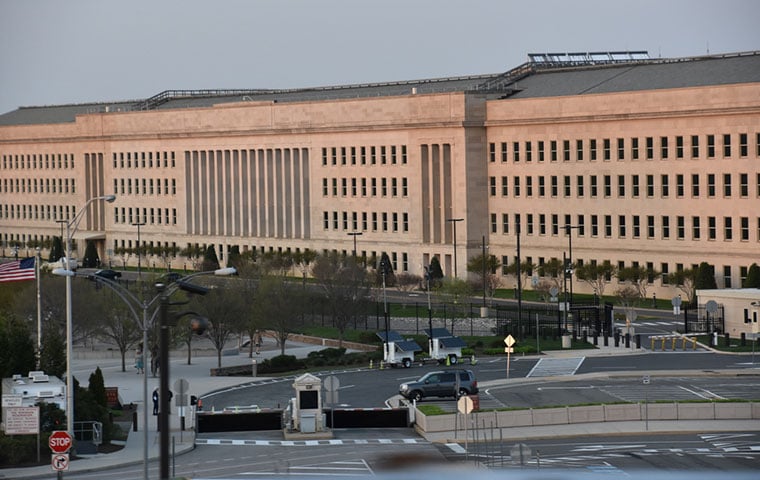 The Pentagon's plan says that of its 741,000 civilian employees, some 183,000 are paid “by a resource other than annual appropriations”, and another 224,000 would be excepted from furlough as needed to protect life and property—about 55 percent. Image: Ritu Manoj Jethani / Shutterstock.com
By: FEDweek Staff
The Pentagon's plan says that of its 741,000 civilian employees, some 183,000 are paid “by a resource other than annual appropriations”, and another 224,000 would be excepted from furlough as needed to protect life and property—about 55 percent. Image: Ritu Manoj Jethani / Shutterstock.com
By: FEDweek StaffUPDATED: Some federal agencies—including the two largest, DoD and VA—have posted new breakdowns of which employees would be furloughed and which would be kept on the job—and in the latter case, for what reason during a partial shutdown.
Those postings show differences both in the shares of their workforces falling into different categories and how long even furloughed employees would be expected to remain on the job to conduct what the government calls “orderly shutdown operations” such as securing their work.
The postings come as OMB has changed prior policy of posting those “shutdown contingency plans” on its own site—it earlier took down postings dating to the Biden administration—instead leaving it up to individual agencies to post them. OMB has however continued to collect them and recently prodded agencies to submit updated versions for its review.
In that notice, OMB also told agencies to prepare to issue RIF notices to employees in functions whose funding authority would lapse, regardless of whether they would be expected to continue working, and to reevaluate who they would retain once funding is restored on grounds that their functions are required by law.
In its newly posted plan, the VA for example said that largely because of long-term funding applying to its Veterans Health Administration, which accounts for the large majority of its 461,000 employees, plus positions “necessary to protect life and property,” it would furlough fewer than 15,000—only 3 percent. Pre-funded positions include not only those involved with patient care but also suicide prevention programs, homelessness programs, the Veterans Crisis Line and caregiver support.
In addition, the Veterans Benefit Administration “will continue various benefit functions, such as education benefit claims processing and payments . . . as necessarily implied to prevent significant disruption to mandatory benefits programs.” However, certain research, call center, administrative and other functions would be suspended.
DoD’s plan – see note – meanwhile says that of its 741,000 civilian employees, some 183,000 are paid “by a resource other than annual appropriations” such as multi-year funding, trust funds and reimbursable work arrangements, and another 224,000 would be excepted from furlough as needed to protect life and property—about 55 percent. (Note: A recent executive order gives the department the “secondary” title of Department of War to better emphasize “readiness and resolve,” while legislation has been introduced in Congress – which continues to use “Defense” in legislation, to formalize the name change.)
“Positions that provide direct support to excepted positions may also be deemed excepted if they are critical to performing the excepted activity,” on a case-by-case basis using standards in the document, it says.
Both also note that under general policy, even furloughed employees would be expected to report for work for shutdown activities at first, with the VA projecting such activities to last three days but DoD projecting only a half-day.
Meanwhile, the IRS plan points out that the Inflation Reduction Act—a Biden administration initiative—”provided supplemental appropriations available through September 30, 2031, for all IRS appropriations accounts. With this funding the IRS will not experience a lapse in appropriations on October 1, 2025, and normal IRS operations will continue.”
It says that its 74,300 employees would be “designated as ‘exempt’ and would be retained in the case of a lapse shutdown.” That figure accounts for employees who accepted deferred resignation offers—some of whom have been offered reinstatement. A footnote adds that the plan covers only the first five business days of a shutdown but does not indicate that the agency would have to stop using the advance funding after that point.
Other agencies whose plans are on their sites include HHS and OPM. However, the former dates to 2024 and the latter to 2023.
OPM Advises Agencies on Conducting RIFs During Shutdown
Updated Shutdown Contingency Plans Show Range of Impacts
Use Shutdown as Justification for More RIFs, OMB Tells Agencies
Unions Win a Round in Court Disputes over Anti-Representation Orders
Deferred Resignation Periods End for Many; Overall 12% Drop
Senate Bill Would Override Trump Orders against Unions
See also,
How to Handle Taxes Owed on TSP Roth Conversions? Use a Ladder
The Best Ages for Federal Employees to Retire
Best States to Retire for Federal Retirees: 2025

